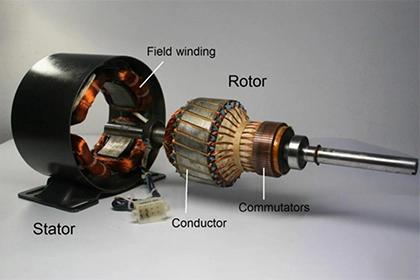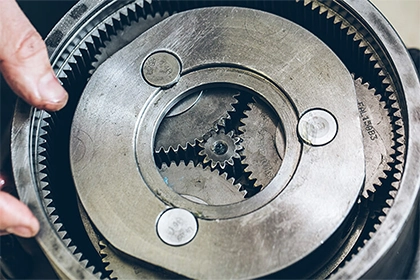
How to reverse ac motor direction?
Sometimes, when we use AC motors, we need to reverse the operation to meet different needs. Therefore, it is necessary to know how to reverse AC motors.
The ability to reverse the direction of an AC motor is essential in various industrial and commercial applications. Understanding the process and techniques involved in reversing AC motor direction is crucial for professionals working in fields such as electrical engineering, automation, and machinery. In this essay, we will explore the step-by-step procedure for reversing the direction of an AC motor, highlighting the necessary components, wiring configurations, and safety considerations.
I. Understanding AC Motors
Before delving into the reversal process, it is important to grasp the fundamental principles of AC motors. AC motors operate based on the interaction between magnetic fields generated by the stator (stationary part) and the rotor (rotating part). These motors typically have two main windings, namely the main winding and the auxiliary winding, which determine the direction of rotation.
II. Motor Reversal Methods
There are several methods to reverse the direction of an AC motor. We will discuss the most common approaches employed in the industry:
Reversing the Rotation with Switching
This method involves manually switching the connections of the main winding to change the rotational direction. By swapping the connections, the motor's magnetic field is altered, leading to a reversal in rotation. The steps involved in this method include:
- Power Disconnect: Prior to any motor maintenance or modification, it is crucial to disconnect the power supply to ensure safety.
- Identifying Motor Connections: Carefully analyze the motor's wiring diagram and identify the terminals associated with the main winding. These terminals are often labeled as T1 and T2.
- Reversing Main Winding Connections: Swap the connections of the T1 and T2 terminals. This can be achieved by disconnecting the wires and reconnecting them in the reverse order.
- Testing the Motor: After completing the wiring changes, reconnect the power supply and test the motor's operation. Observe the rotation direction to confirm successful reversal.
Reversing the Rotation with a Reversing Starter
Another common method involves using a reversing starter, which simplifies the reversal process and provides a convenient means of reversing the motor direction. The steps involved are as follows:
- Acquiring a Reversing Starter: Obtain a reversing starter designed for AC motors. These starters typically include the necessary relays, contactors, and wiring configurations to facilitate direction reversal.
- Power Disconnect: As with the previous method, ensure that the power supply is disconnected before proceeding.
- Wiring the Reversing Starter: Follow the manufacturer's instructions to wire the reversing starter correctly. This typically involves connecting the motor's terminals to the appropriate contacts on the starter.
- Testing the Motor: After completing the wiring, reconnect the power supply and test the motor's operation. Verify that the motor rotation has been successfully reversed.
III. Safety Considerations
When working with AC motors, safety should always be a top priority. Consider the following safety measures:
- Lockout/Tagout: Before performing any maintenance or modification on a motor, ensure that the power supply is locked out and tagged to prevent accidental energization.
- PPE (Personal Protective Equipment): Wear appropriate PPE, such as safety glasses, gloves, and protective clothing, to protect against potential hazards.
- Proper Tools and Equipment: Utilize insulated tools and equipment designed for electrical work to minimize the risk of electrical shock.
Conclusion
Reversing the direction of an AC motor is a crucial skill for professionals in various industries. By understanding the principles behind AC motor operation and employing the appropriate methods, such as manual switching or utilizing a reversing starter, one can effectively reverse the motor's direction. However, it is essential to prioritize safety throughout the process, adhering to lockout/tagout procedures and wearing appropriate PPE. By following the outlined steps and considering safety precautions, professionals can confidently reverse the direction of AC motors, enabling them to meet the diverse needs of their respective fields.



Leave a Comment